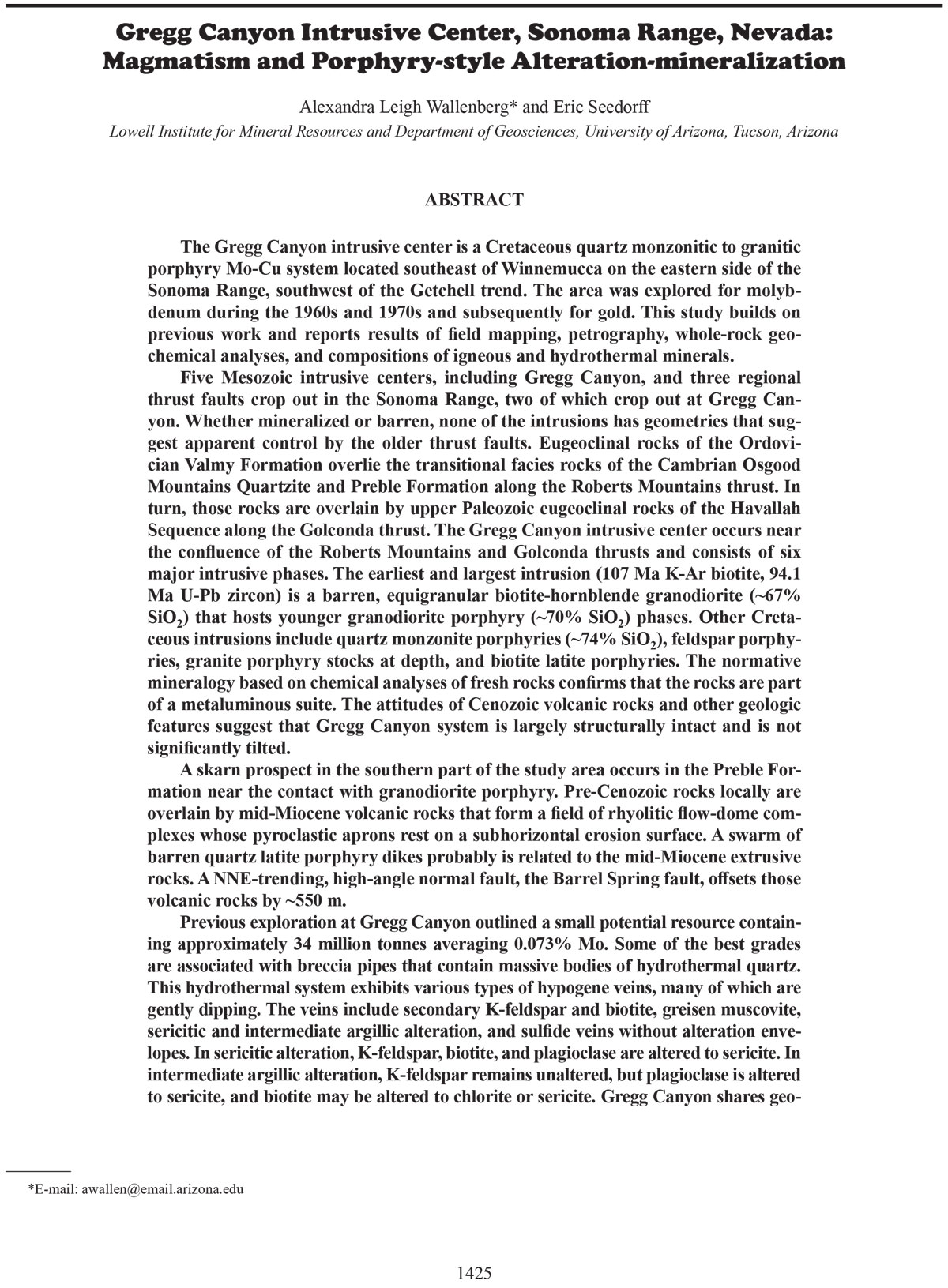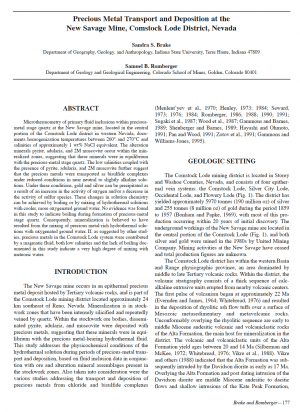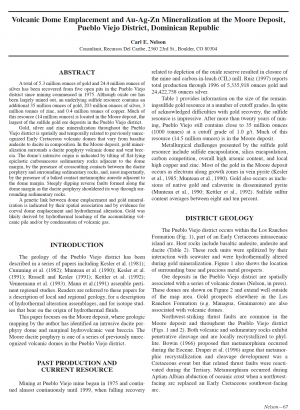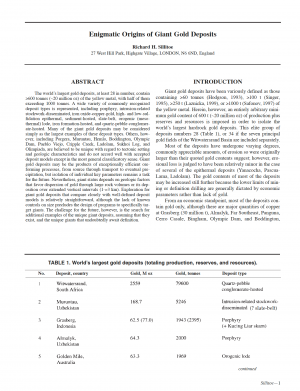Description
The Gregg Canyon intrusive center is a Cretaceous quartz monzonitic to granitic
porphyry Mo-Cu system located southeast of Winnemucca on the eastern side of the
Sonoma Range, southwest of the Getchell trend. The area was explored for molybdenum during the 1960s and 1970s and subsequently for gold. This study builds on
previous work and reports results of field mapping, petrography, whole-rock geochemical analyses, and compositions of igneous and hydrothermal minerals.
Five Mesozoic intrusive centers, including Gregg Canyon, and three regional
thrust faults crop out in the Sonoma Range, two of which crop out at Gregg Canyon. Whether mineralized or barren, none of the intrusions has geometries that suggest apparent control by the older thrust faults. Eugeoclinal rocks of the Ordovician Valmy Formation overlie the transitional facies rocks of the Cambrian Osgood
Mountains Quartzite and Preble Formation along the Roberts Mountains thrust. In
turn, those rocks are overlain by upper Paleozoic eugeoclinal rocks of the Havallah
Sequence along the Golconda thrust. The Gregg Canyon intrusive center occurs near
the confluence of the Roberts Mountains and Golconda thrusts and consists of six
major intrusive phases. The earliest and largest intrusion (107 Ma K-Ar biotite, 94.1
Ma U-Pb zircon) is a barren, equigranular biotite-hornblende granodiorite (~67%
SiO2) that hosts younger granodiorite porphyry (~70% SiO2) phases. Other Cretaceous intrusions include quartz monzonite porphyries (~74% SiO2), feldspar porphyries, granite porphyry stocks at depth, and biotite latite porphyries. The normative
mineralogy based on chemical analyses of fresh rocks confirms that the rocks are part
of a metaluminous suite. The attitudes of Cenozoic volcanic rocks and other geologic
features suggest that Gregg Canyon system is largely structurally intact and is not
significantly tilted.
A skarn prospect in the southern part of the study area occurs in the Preble Formation near the contact with granodiorite porphyry. Pre-Cenozoic rocks locally are
overlain by mid-Miocene volcanic rocks that form a field of rhyolitic flow-dome complexes whose pyroclastic aprons rest on a subhorizontal erosion surface. A swarm of
barren quartz latite porphyry dikes probably is related to the mid-Miocene extrusive
rocks. A NNE-trending, high-angle normal fault, the Barrel Spring fault, offsets those
volcanic rocks by ~550 m.
Previous exploration at Gregg Canyon outlined a small potential resource containing approximately 34 million tonnes averaging 0.073% Mo. Some of the best grades
are associated with breccia pipes that contain massive bodies of hydrothermal quartz.
This hydrothermal system exhibits various types of hypogene veins, many of which are
gently dipping. The veins include secondary K-feldspar and biotite, greisen muscovite,
sericitic and intermediate argillic alteration, and sulfide veins without alteration envelopes. In sericitic alteration, K-feldspar, biotite, and plagioclase are altered to sericite. In
intermediate argillic alteration, K-feldspar remains unaltered, but plagioclase is altered
to sericite, and biotite may be altered to chlorite or sericite. Gregg Canyon shares geological similarities to other Cretaceous quartz monzonitic to granitic porphyry Mo-Cu
systems in the Great Basin such as Hall (Nevada Moly), Buckingham, and Monte Cristo.





